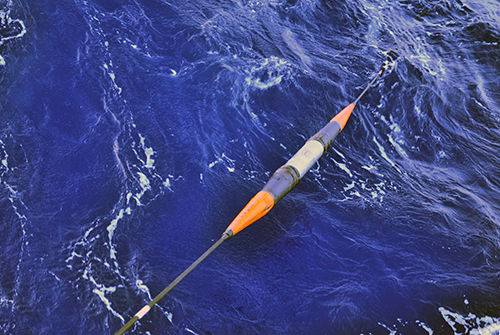More than a million kilometers of submarine cables traverse the world’s oceans, bringing Internet service to billions of people. These remarkable systems connect people, nations, and economies, but this infrastructure could provide even more, adding invaluable environmental data for understanding the ocean above and the Earth beneath the seafloor.
In light of this potential, an international joint task force (JTF) of three United Nations (UN) agencies (International Telecommunication Union, World Meteorological Organization, and Intergovernmental Oceanographic Commission of the UN Educational, Scientific and Cultural Organization) is working to incorporate environmental monitoring sensors into transoceanic submarine cable systems.
A typical telecommunication system is composed of an electro-optical seabed cable with optical repeaters, regularly spaced at 50- to 100-kilometer intervals, that reamplify the signal carried by the cable. Adding environmental sensors to the repeaters would provide an unparalleled global network of real-time data for ocean climate and sea level monitoring and disaster mitigation from earthquake and tsunami hazards—a Science Monitoring and Reliable Telecommunications (SMART) network.

The 5th Workshop on SMART Cable Systems was held in April, in conjunction with the industry SubOptic 2016 Forum. More than 30 representatives from industry, science, and government met to discuss, debate, and plan the implementation path for this SMART cable initiative.
Key aspects of discussion included scientific rationale for building SMART cable systems, engineering capabilities to build these systems, funding options, the need for interaction with industry, a legal framework and permitting pathways, and ways for implementing outreach and next steps
The SMART effort began in 2012 with the formation of the JTF and continued in 2014–2015 with two NASA-funded science workshops. This year’s workshop addressed the opportunity for government, industry, and scientists to reach a consensus on how new cable systems can become SMART. These systems should meet the increasing demand for Internet services while satisfying additional societal needs for climate and disaster monitoring and mitigation data.
A SMART Future
The opportunity that SMART cable systems provide is not without challenges. Workshop attendees focused on a phased approach, beginning with a “wet demonstrator” (i.e., a system installed in the ocean) hosted by a scientific ocean cabled observatory. The wet demo will allow scientists and engineers to show that installing sensors connected to optical cable repeaters will produce valid science data while using standard mechanical cable “kit” and deployment operations. As a result of our workshop, we are issuing a request for information from potential wet demo participants that will feed into a proposal to sponsors.
A subsequent phase could provide complete integration into a full submarine cable system. This effort could start with short systems before evolving into transoceanic systems. Attendees agreed that the science community and environmental agencies will need to prioritize nominal cable routes, acknowledging financial and legal constraints from the cable industry.

Most existing environmental oceanic observation systems are installed, operated, and maintained by governments or academia, but submarine telecommunication cable systems are the purview of the private sector. Thus, workshop participants plan to strengthen connections with the International Cable Protection Committee (the leading cable industry organization), our own sponsoring UN agencies, potential national and international sponsors, and the international science community.
For commercial implementation, prospective system owners need to consider the SMART cable option at project conceptualization. Good communication among all stakeholders will be crucial to the success of this important climate change and disaster monitoring and mitigation initiative. We invite participation from all groups and individuals to help move this initiative forward.
—Bruce M. Howe, University of Hawai’i at Mānoa, Honolulu, Hawaii; email: [email protected]; Jerome Aucan, French Institute for Research and Development, Noumea, New Caledonia; and Frederik Tilmann, German Research Center for Geosciences, GFZ Potsdam, Potsdam, Germany.
Citation:
Howe, B. M.,Aucan, J., and Tilmann, F. (2016), Submarine cable systems for future societal needs, Eos, 97, https://doi.org/10.1029/2016EO056781. Published on 09 August 2016.
Text © 2016. The authors. CC BY-NC-ND 3.0
Except where otherwise noted, images are subject to copyright. Any reuse without express permission from the copyright owner is prohibited.

